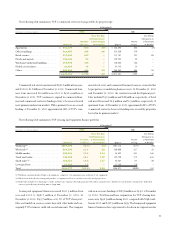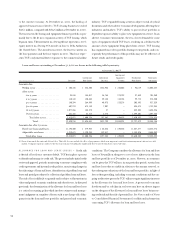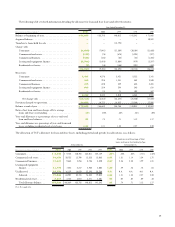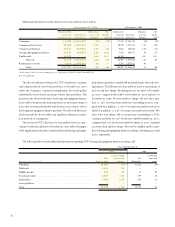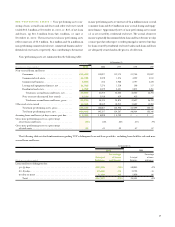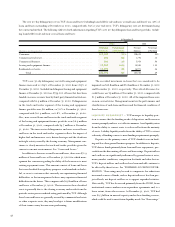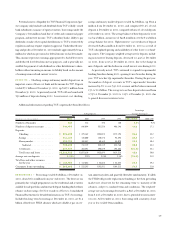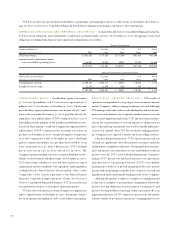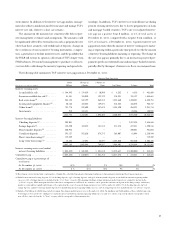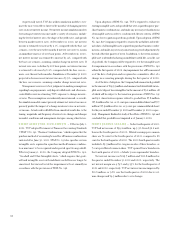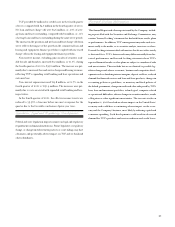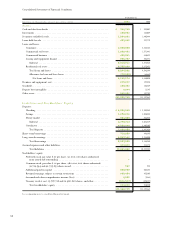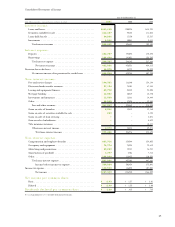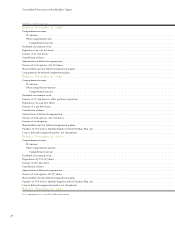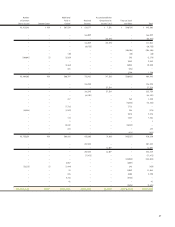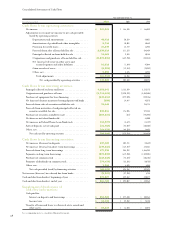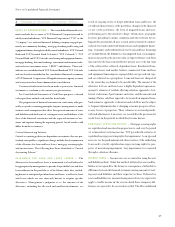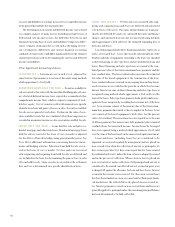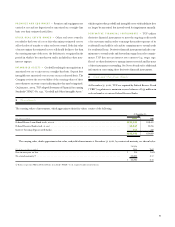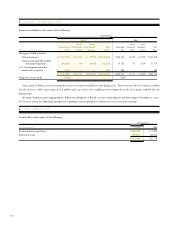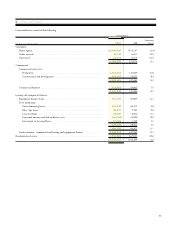TCF Bank 2001 Annual Report Download - page 45
Download and view the complete annual report
Please find page 45 of the 2001 TCF Bank annual report below. You can navigate through the pages in the report by either clicking on the pages listed below, or by using the keyword search tool below to find specific information within the annual report.
TCF provided $7 million for credit losses in the fourth quarter
of 2001, compared with $4.7 million in the fourth quarter of 2000.
Net loan and lease charge-offs were $5.6 million, or .27% of aver-
age loans and leases outstanding, compared with $2 million, or .10%
of average loans and leases outstanding during the same 2000 period.
The increase in the provision and net loan and lease charge-offs from
2000 reflects the impact of the growth in the commercial loan and
leasing and equipment finance portfolios coupled with increased
charge-offs in the leasing and equipment finance portfolio.
Non-interest income, excluding gains on sales of securities avail-
able for sale and branches, increased $9.3 million, or 10.7%, during
the fourth quarter of 2001 to $95.6 million. The increase was pri-
marily due to increased fees and service charges and leasing revenues,
reflecting TCF’s expanding retail banking and lease operations and
customer base.
Non-interest expense increased $14.8 million, or 12.7%, in the
fourth quarter of 2001 to $131.4 million. The increases were pri-
marily due to costs associated with expanded retail banking and leas-
ing activities.
In the fourth quarter of 2001, the effective income tax rate was
reduced to 35.36% of income before income tax expense for the
quarter due to the favorable conclusion of prior year taxes.
Legislative, Legal and Regulatory Developments
Federal and state legislation imposes numerous legal and regulatory
requirements on financial institutions. Future legislative or regulatory
change, or changes in enforcement practices or court rulings, may have
a dramatic and potentially adverse impact on TCF and its bank and
other subsidiaries.
Forward-Looking Information
This Annual Report and other reports issued by the Company, includ-
ing reports filed with the Securities and Exchange Commission, may
contain “forward-looking” statements that deal with future results, plans
or performance. In addition, TCF’s management may make such state-
ments orally to the media, or to securities analysts, investors or others.
Forward-looking statements deal with matters that do not relate strictly
to historical facts. TCF’s future results may differ materially from his-
torical performance and forward-looking statements about TCF’s
expected financial results or other plans are subject to a number of risks
and uncertainties. These include but are not limited to possible leg-
islative changes and adverse economic, business and competitive devel-
opments such as shrinking interest margins; deposit outflows; reduced
demand for financial services and loan and lease products; changes in
accounting policies or guidelines, or monetary and fiscal policies of
the federal government; changes in credit and other risks posed by TCF’s
loan, lease and investment portfolios; technological, computer-related
or operational difficulties; adverse changes in securities markets; results
of litigation or other significant uncertainties. The terrorist attacks on
September 11, 2001 have had an adverse impact on the United States’
economy and could have a continuing adverse impact on the econ-
omy and the Company’s business, most likely by reducing capital and
consumer spending. Such developments could result in decreased
demand for TCF’s products and services and increased credit losses.
43


